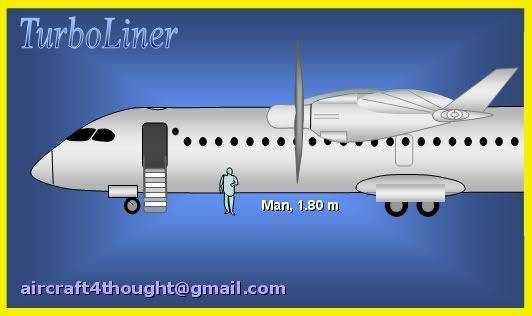Could GRP and Carbon Fibre be introduced to parts of the airframe to reduce weight? Flying controls, for example?
Is this feasible at these speeds?
I think composites / CRFP are not the perfect choice for every use. Looking at recent aircraft developments control surfaces, wings, wing torsion box, tail could be made in composites. Fuselage for these aircraft is a different question. Ramp rash and CRFP for fuselages donīt go very well together on aircraft that spend most time on busy airports.
Small planes might work in the other markets you noted, but due to population dencity and oceans, which mean driving is less an option, bigger planes are relativly easy to fill even on shorter runs.
Thnx TEACHME for your comments. I think the current generation of turbo props (ATR 72, Q400, F50) are more then twice as small as this Turboliner. It could offer turbo prop efficiency (-20% fuel etc.) at narrowbody 737 and A320 capabilities. Props have better airfield performance and fuel consumptuion below 450 mph.
http://www.thestar.com/Business/article/350137
I projected a person to show how large it is compared to existing props. It is a A319 /737-700 sized 150 seat aircraft.

Out of about 30 flights in and out of Hong Kong, I have only flown 330s, 747s, and 777s to my recolection. The plane you suggest might work within China, say Xian to Nanjing, or in Thailand from Bangkok to Changmai, or from HK to small Chinese cities, but not much else.
My reference are European and US flights. Hundreds of narrowbody aircraft flying 4-10 daily connections on 500-800 nm city pairs. O&D as well as feeder flights. Then there is the booming low costs business. Almost all 150 seaters at short high frequency flights.